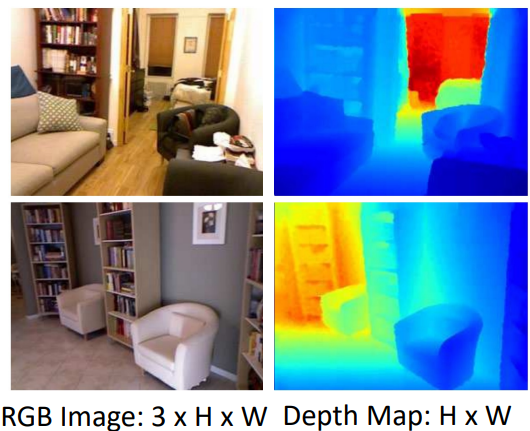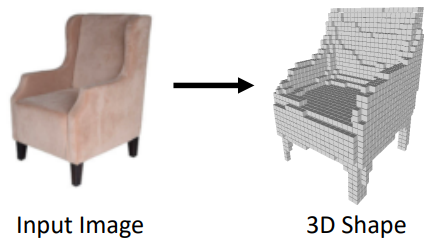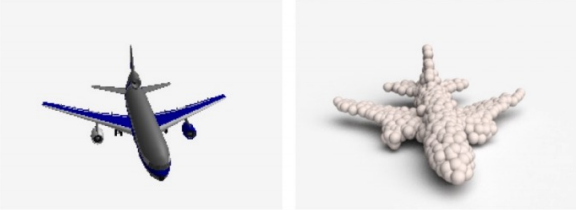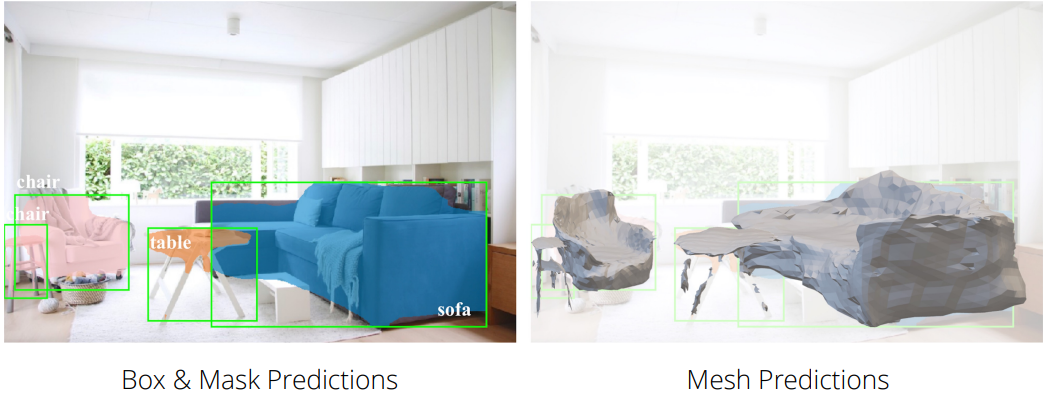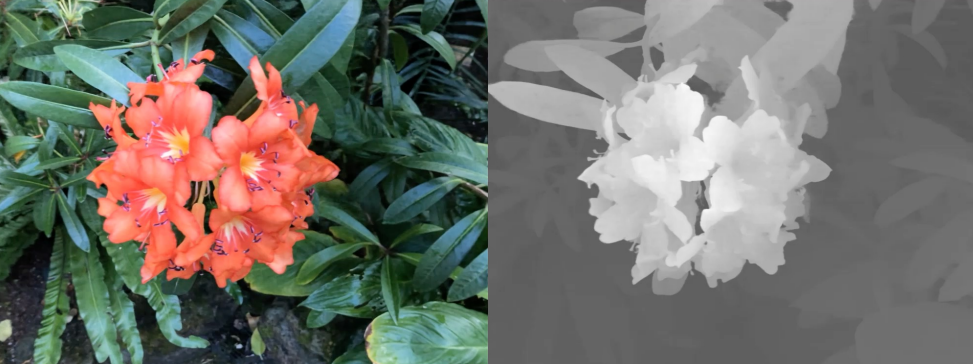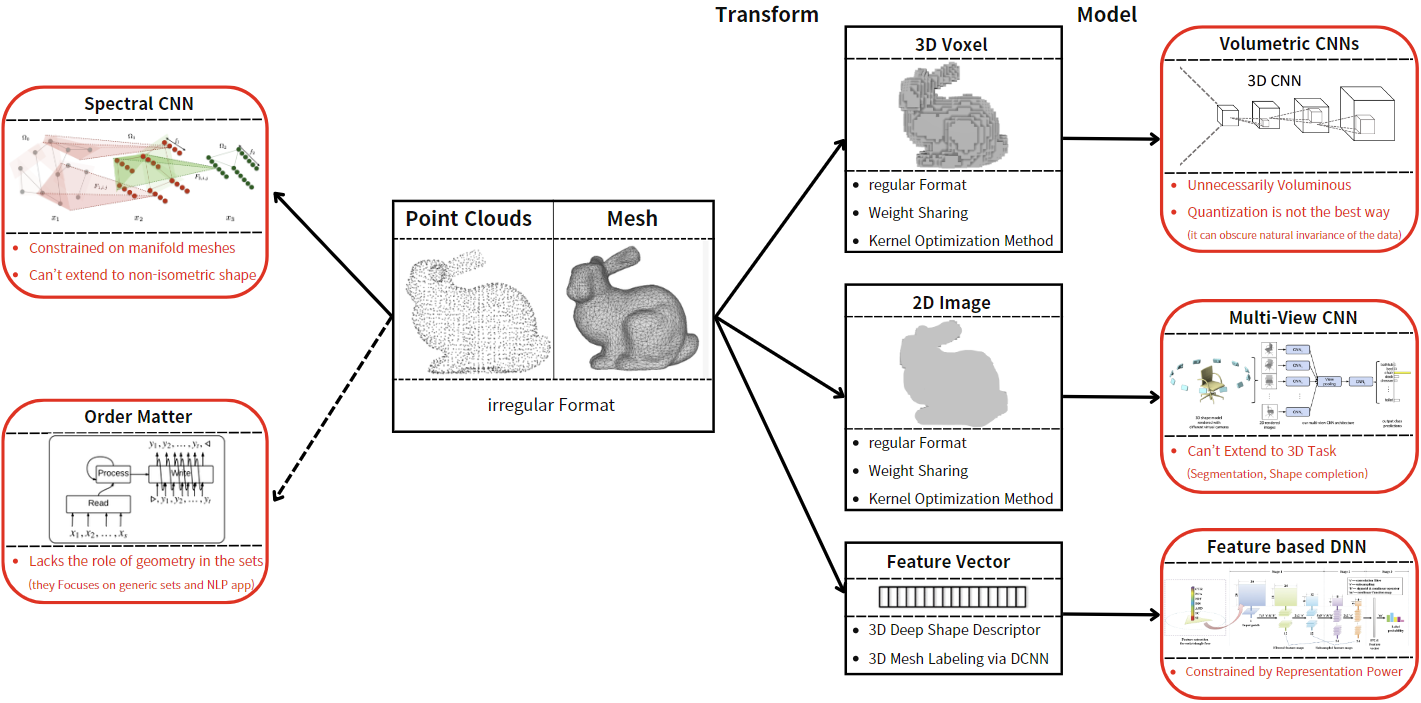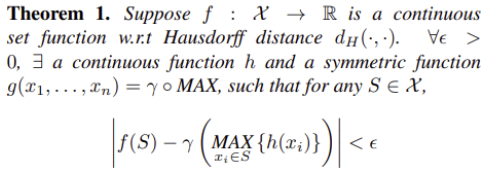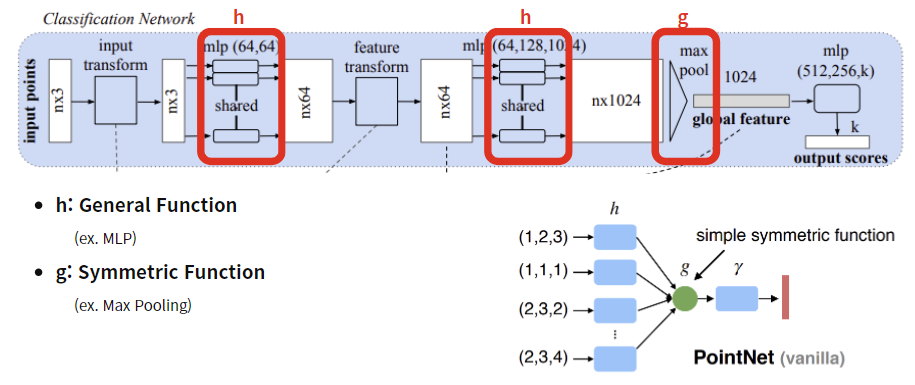[Paper Review] PointNet: Deep Learning on Point Sets for 3D Classification and Segmentation
1. BackGround
1) 3D Representation
2) Previous Work
2. Proposal
1) Challenges
1) Unordered
Network must invariant to N! Permutation
It means that Network must always predict the same output, even though the order of point cloud is changed
2) Interaction among Points
Model needs to be able to capture Local/Global structures
Even though point cloud is kind of sets, It must be able to interact with surrounding points
3) Invariance under transformations
Learned representation of the point set should be invariant to certain transformation.
It means that Network must always predict the same output, even though the point cloud is changed with rigid transformation
※ rigid transformation: rotation, translation
2) Solution(1) - Symmetric Function
Target Challenges
| Unordered | Interaction among points | Invariance under transformations |
|---|---|---|
| Symmetric Function | _ | _ |
Method1: Sort by Canonical order (X)
We can sort point clouds before entering them into the network
$\rightarrow$ but we can’t make stable network with point perturbation.
Method2: RNN with augment (X)
we can use augmentation that allows RNN model to consider all permutatiopn orders
$\rightarrow$ but we can’t use if we have thousands of input
Method3: Use Symmetric Function (O)
we can approximate our network to a symmetric funtion
\[\Downarrow\]Author stated that using maxpooling as a symmetric function is the best way, because it can make our network learn the critical points of point clouds
3) Solution(2) - Aggregation
Target Challenges
| Unordered | Interaction among points | Invariance under transformations |
|---|---|---|
| Symmetric Function | Aggregation | _ |
